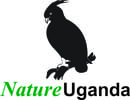Waterfowl counts and Bird Population Monitoring

Waterfowl counts and Bird Population Monitoring are long- term biodiversity monitoring programmes used by NatureUganda. This programme has been running since 1991 and is one of the oldest bird monitoring programme in the country.
The programme covers four major schemes; water fowl, land birds, raptors and nightjars. Apart from raptor count scheme which are conducted once a year in January, the rest are conducted bi-annually, every January and July. These schemes are conducted both inside and outside protected areas covering most of the Important Bird Areas in Uganda.
Water birds are counted by total count method using a boat, on foot or in a vehicle, while Land bird counts are conducted by transect method. Raptor counts are conducted while driving a series of transects along the major roads and tracks in Uganda’s in Uganda’s savanna national parks, whereas, Nightjars are counted using a vehicle after sunset, covering Bugungu airstrip in Murchison Falls and along the main road from Sambya Lodge to Paraa.
During the January 2022 counts, a total of eighty-four (84) water bird species were recorded from the 28 eight sites monitored. Among them, four species (Grey-crowned Crane, lesser Flamingo, African Skimmer and Shoe-bill) are of global conservation importance.
A total of 34 raptor species were recorded from the covered 1556km. Among these, twelve were of conservation importance, including four globally critically endangered species (Hooded Vulture Necrosyrtes monachus, White-backed Vulture Gyps africanus, White-headed Vulture Trigonoceps occipitalis and Ruppell’s Vulture Gyps rueppellii) and two globally endangered species (Bateluer Terathopius ecaudatus and Lappet-faced Vulture Torgos tracheliotos).
The highest number of raptors were recorded along tracks in Murchison falls National park (24 species), followed by Queen Elizabeth National Park (22 species) while Lake Mburo National Park had the least (12 species). There also 21 species recorded along public roads (832 km) leading to the three savanna national parks. There were also five are Palearctic migrants (European Honey Buzzard Pernis apivorus, Osprey Pandion haliaetus, Western Marsh Harrier Circus aeruginosus, Yellow-billed Kite Milvus migrans and Steppe Eagle Aquila nipalensis) and two Afro-tropical migrants (Grasshopper Buzzard and Black Kite).
Within National Parks, birds and there habitat are majorly threatened by poisoning, invasive species, fires and development projects such oil exploration and road construction especially in Murchison Falls National Park. Major threats to birds and their habitats outside protected areas include; habitat encroachment as a result of increasing human population and the associated demand for land for cultivation and settlement.
Other threats include, bird hunting and trapping, overgrazing, infrastructure development, water pollution and flooding and indiscriminate use of pesticides and herbicides.
Related Posts
Recent Posts
Celebrating World Environment Day with a Stand Against Plastic Pollution
NatureUganda holds the 31st Annual General Meeting
Public Talk on how Biodiversity Credits Deliver Impact for Nature, Climate and People
All Categories
- Conservation and Development (31)
- Eco-tourism (3)
- Education and Awareness (13)
- Forests (9)
- Gorvenance (1)
- Habitats (9)
- membership (1)
- Nature walk (2)
- People (8)
- Projects (10)
- Public dialogue (9)
- Research and Monitoring (18)
- Sites (4)
- Species (11)
- Wetlands (13)
- Wildlife (7)




